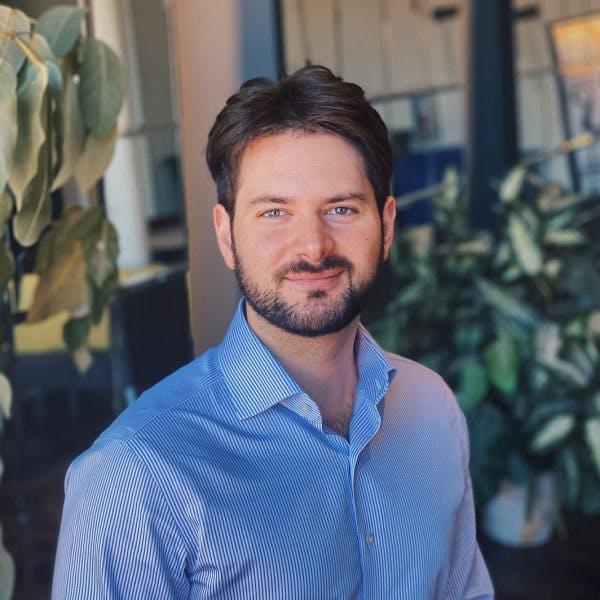Scarcity
The Basic Idea
There is a limited quantity of resources available to us. However, our desire for these resources is theoretically limitless. This discrepancy between supply and demand is referred to as scarcity. Scarcity gives rise to the challenge of allocating resources in a manner that satisfies as many basic needs and additional demands as possible.1 Abundance is the opposite of scarcity.
Prime examples of scarce resources are time and money. Frequently, people find themselves with an abundance of one, while significantly lacking the other.2 A doctor, for example, might turn an impressive salary, but work well over forty hours a week, leaving them with very little time for themselves. Every resource comes at a cost; in this situation, the doctor’s abundance of money costs them a significant amount of their time. Although some resources may be available in a seemingly vast supply, they are still considered scarce, in a technical sense, because there is only a finite quantity available.
Economics is the science which studies human behaviour as a relationship between ends and scarce means which have alternative uses.
– Lionel Robbins (1932).
Theory, meet practice
TDL is an applied research consultancy. In our work, we leverage the insights of diverse fields—from psychology and economics to machine learning and behavioral data science—to sculpt targeted solutions to nuanced problems.
Key terms
Demand-induced scarcity
One specific kind of scarcity is demand-induced scarcity, which refers to a resource that becomes scarce when demand increases and supply remains the same. It may result from population growth, such as that seen in the sub-Saharan between 1950 and 2000, which significantly decreased the amount of land and freshwater allocated to each citizen.3
Supply-induced scarcity
A second kind of scarcity is supply-induced. This is when the supply is significantly reduced, which greatly increases the gap between the quantity of resources available and the demand. When it comes to natural resources, this frequently results from factors like drought and deforestation.4 This is also the kind of scarcity observed when stores promote “limited edition” items.
Structural scarcity
Structural scarcity is the third type of scarcity and it describes the imbalance of access to a certain resource within a population. This inequality typically arises from systemic issues, such as racism. For example, in South Africa the apartheid lead to the allocation of 87% of the land to the white population, who made up only 25% of the total population. Meanwhile, the Black majority was allocated only 13% of the land.5
History
The link between scarcity and economics was first proposed by Lionel Robbins in his 1932 paper, Essay on the Nature and Significance of Economic Science. His writings were fundamental in the development of this concept within the framework of economics. He asserted that economics is an aspect of behavior – rather than a list of various behaviors – that are influenced by scarcity.6 In this essay, he wrote that “wealth is not wealth because of its substantial properties. It is wealth because it is scarce” (p.47)7, which further underscores just how important scarcity is in our understanding of not only economics, but of how the world works.
Scarcity has since been applied to fields outside of economics, including psychology. The scarcity heuristic, a concept developed by Robert Cialdini, posits that when an object is considered to be scarce, it is perceived as more valuable.8 This heuristic can influence our decision-making, for example, by making us more prone to certain marketing ploys. We may be more inclined to spend money on items marketed as “limited edition” because we consider them to be of greater value than equivalent items which we believe to be available in an abundant supply.
Consequences
Scarcity is a foundational principle of economics. It describes one of the field’s most basic problems: how to efficiently and fairly allocate limited resources? Allocation of a scarce resource brings up a multitude of important questions, such as what is the most cost-effective approach? Should taxes be increased to pay for it? What is the necessary balance between cost and quality? These questions are the basis of economics.1
Controversies
Scarce resources are not allocated evenly among people. This can result in some people having their basic needs and their additional wants fulfilled, whereas others do not have even their basic needs satisfied. The resource of money is the most obvious example of this; some people are billionaires, yet others live paycheck to paycheck and are barely able to make ends meet. In some cases, the inequality that results from scarcity can lead to conflict.
Related TDL Content
How (Not) to Use Behavioral Economics to Influence Consumer Decisions
Using the example of Viagogo, a popular and wildly controversial ticket sales website, this article explores the ways in which behavioral economics can be used to influence consumer decisions. In this case, people continued to flock to the Viagogo website, despite its astronomical ticket prices. This article explores the behavioral economics concepts, scarcity in particular, used by Viagogo to elicit this seemingly irrational behavior.
More Slacking, Less Tracking: How Scarcity Affects the Working Poor
In an effort to shatter stereotypes, this article uses concepts from behavioral economics, like scarcity, to demonstrate that people do not become poor as a result of poor decision-making but that poor decision-making can be a direct result of poverty.
The Consumer Upside of an Economic Downturn
The concept of resource scarcity is addressed in this examination of consumer responses to a recession. More broadly, this article describes the various impacts a recession can have on people and the consequences for us as consumers.
- Chappelow, J. (2019). Scarcity Definition. Investopedia. https://www.investopedia.com/terms/s/scarcity.asp
- Ibid.
- Ibid.
- Environmental Scarcity and the Outbreak of Conflict.
- Ibid.
- Robbins, L. R. (1948). An essay on the nature & significance of economic science (2d ed., rev, and extended). Macmillan.
- Ibid.
- Scarcity (heuristic). BehavioralEconomics.com. https://www.behavioraleconomics.com/resources/mini-encyclopedia-of-be/scarcity-heuristic/
About the Authors
Dan Pilat
Dan is a Co-Founder and Managing Director at The Decision Lab. He is a bestselling author of Intention - a book he wrote with Wiley on the mindful application of behavioral science in organizations. Dan has a background in organizational decision making, with a BComm in Decision & Information Systems from McGill University. He has worked on enterprise-level behavioral architecture at TD Securities and BMO Capital Markets, where he advised management on the implementation of systems processing billions of dollars per week. Driven by an appetite for the latest in technology, Dan created a course on business intelligence and lectured at McGill University, and has applied behavioral science to topics such as augmented and virtual reality.
Dr. Sekoul Krastev
Sekoul is a Co-Founder and Managing Director at The Decision Lab. He is a bestselling author of Intention - a book he wrote with Wiley on the mindful application of behavioral science in organizations. A decision scientist with a PhD in Decision Neuroscience from McGill University, Sekoul's work has been featured in peer-reviewed journals and has been presented at conferences around the world. Sekoul previously advised management on innovation and engagement strategy at The Boston Consulting Group as well as on online media strategy at Google. He has a deep interest in the applications of behavioral science to new technology and has published on these topics in places such as the Huffington Post and Strategy & Business.





